What Is Laver aka Gim? The Korean Superfood That Is On Every Restaurant Table
Last Updated on November 28, 2023
Gim, a kind of seaweed also called laver, has been one of my favorite foods that I learned to eat while living in Korea. Seaweed is quite the superfood and has tons of health benefits and laver is so yummy to boot. If you’re wondering what is laver, what is gim, what’s the difference and what kind of seaweed it is, then you came to the right place.
Laver is often gifted for holidays in Korea because it is just that important and so oft eaten in Korea so whether you’re coming here or are just looking for a healthy superfood to add to your diet, it’s something you should know about. Laver, a dried seaweed, is often eaten wrapped around rice, tops soups as a garnish to add a bit of salt rather than adding straight salt, and is a snack on tables when drinking beer. Have you tried it?
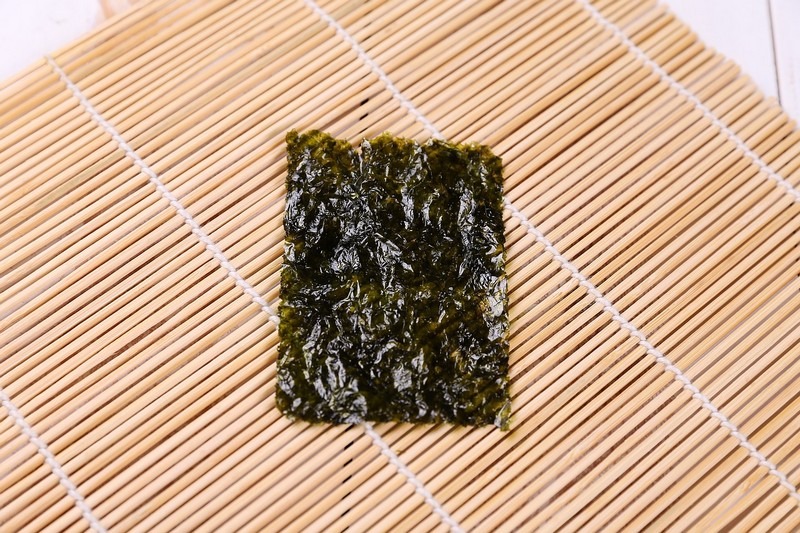
Feel free to skip around to find out more about gim/laver:
- What Is Gim? What Is Laver? Are They The Same?
- Gim Vs. Nori
- Is Laver Healthy?
- How Is Laver Produced In Korea?
- Types Of Laver
- How To Store Laver
- Where To Buy Laver In Korea & Abroad
(This post contains affiliate links, which means I receive a certain percentage of a sale if you purchase after clicking at no cost to you. Thank you for your support.)
What Is Gim? What is Laver? Are They The Same?
Before I came to Korea, I had no idea how many different kinds of seaweed there were. Most American markets will stock a kind of gim, or dried seaweed known as laver, that can be used to make rice rolls, but not much else. Come to Korea and there are aisles and aisles of different kinds of seaweed and each is used for something different.
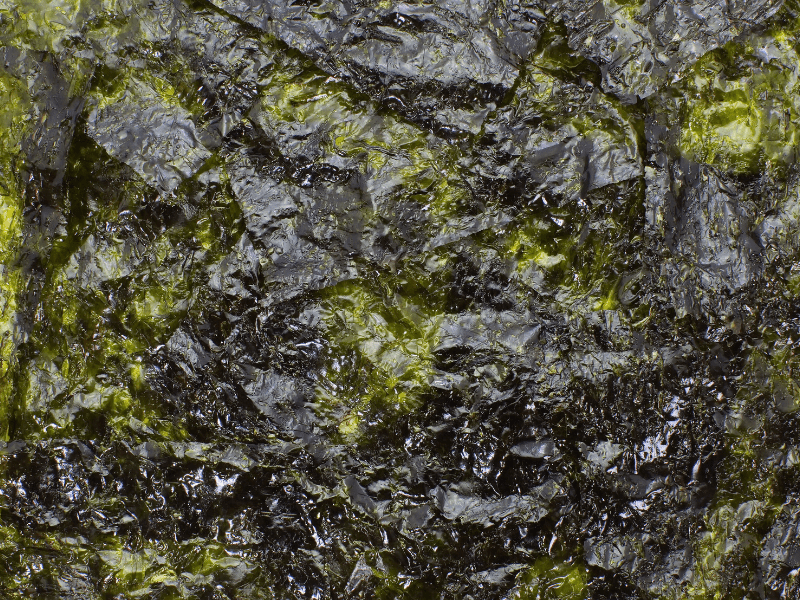
Gim (김), also romanized as “kim” sometimes, is the Korean word for an edible seaweed also called laver. So in answer to those questions above, yes they are the same. The most commonly cultivated species of laver in Korea is the P. yezoensis followed by the P. tenera. The algae to make it here only grows in the oceans that surround the southern parts of the Korean peninsula.
The laver can come unflavored and basically just as is, but they also come with sesame oil and salted versions so when buying you really need to know what you want and what you’re going to be making. I personally LOVE the oiled and salted but that’s for topping soups and wrapping around little rice balls. You wouldn’t want that kind for making a roll.
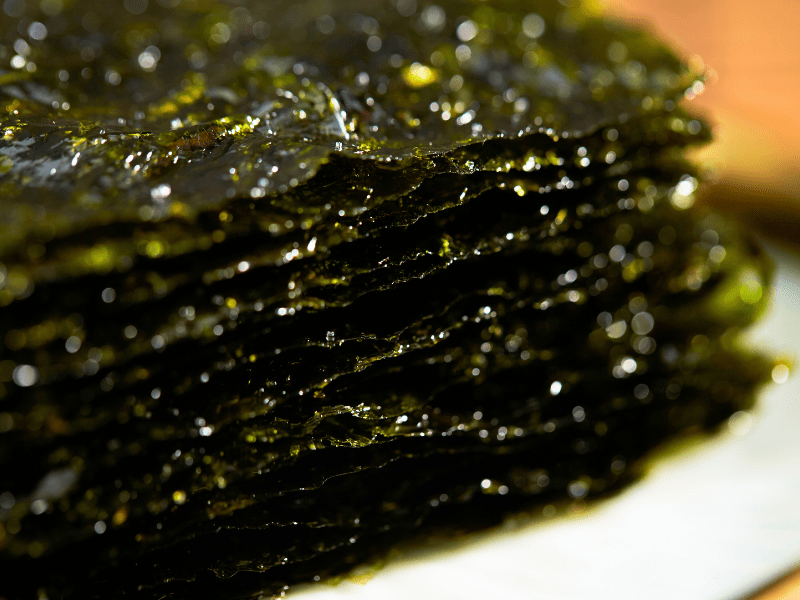
Gim is a common side dish, or banchan, on Korean restaurant and dining tables and if you come to my house, sometimes it just takes the place of potato chips too. It’s a bit crispy, it tastes good, and it’s actually healthy. Our family favorite is Daechun seaweed, but some other good options are Wang Korean Roasted Seaweed and NongHyup Roasted Sesame Oil Laver Seaweed.
Laver isn’t just eaten in Korea. It’s eaten everywhere from Wales where they make laverbread and Ireland where they eat it with bacon to the Philippines where they make a dessert with it and so on. It’s definitely a food you could come across again and again as you travel around seaside spots in the world.
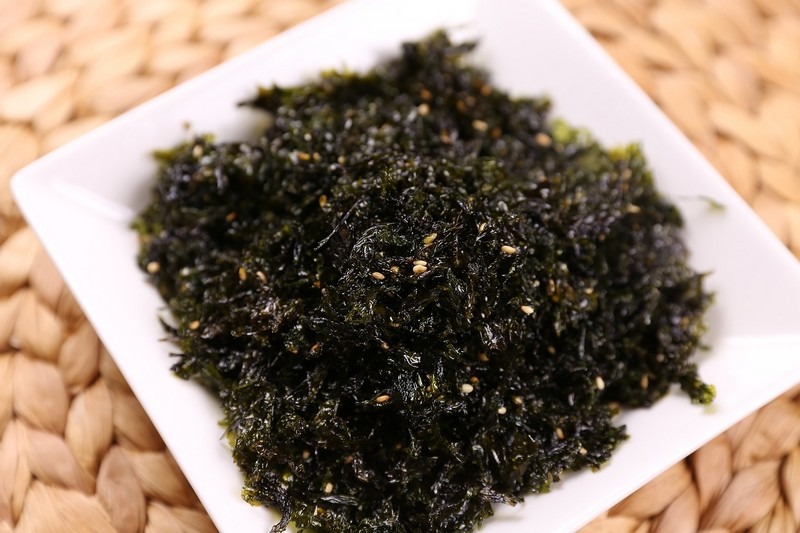
Gim Vs. Nori
We’ve been over gim, but let’s go over nori a bit. Both gim and nori are referring to laver. Nori is what the Japanese call the same food so when you’re shopping for laver, if it comes from Korea, it will likely be labeled “gim” while the products from Japan will have the same food labeled as “nori”. There are some key differences though that you should be aware of especially if you’re getting into Korean cooking and want to make authentic Korean meals or side dishes. Korean laver is usually a bit thinner and glossier than nori.
Is Laver Healthy?
There is a reason that pregnant women and postpartum women are fed seaweed soup after giving birth in Korea and it has everything to do with the health benefits of eating seaweed. Laver is the best dietary source of iodine, which helps thyroid glands,and is high in iron and protein. It contains vitamins and minerals like vitamin A, vitamin B2, vitamin C, and vitamin D and is high in antioxidants that help to protect cells from damage.
Laver also contains a person’s daily amount of 22% potassium. Seaweed has 67 times more vitamin A than eggs and 1.5 times more vitamin C than oranges. Laver is one of the most nutritious seaweeds. Important to note though is that it should be eaten in moderation as everything should be due to its high levels of sodium and iodine.
Just a note about that seaweed soup that women eat in Korea after giving birth, and actually Koreans eat this on every birthday there after as well, it does NOT have laver but uses miyok, a kind of sea mustard seaweed. As someone who came here without having much experience in seaweed, I definitely didn’t realize there was a difference when I tried to make my first seaweed soup so make sure you know the difference and use the right kind of seaweed depending on what you’re trying to make/eat.
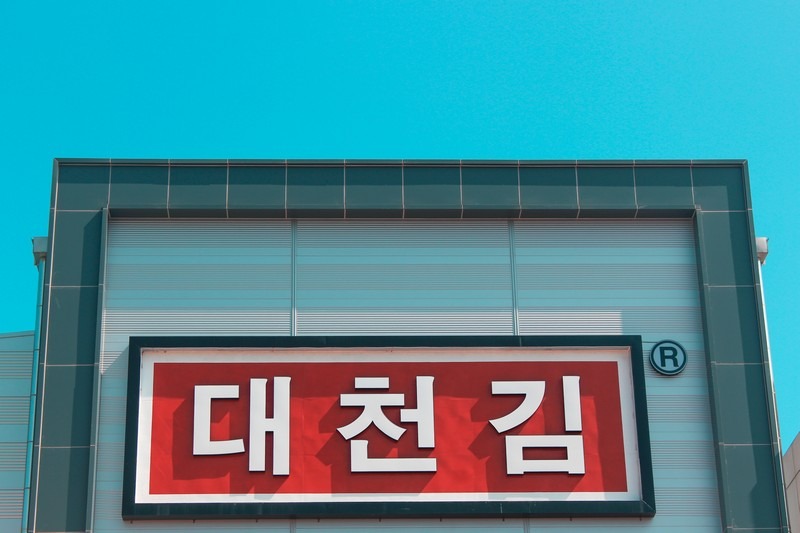
How Is Laver Produced in Korea?
Around 19,500 tonnes of gim are produced in Korea annually. Naturally grown gim is actually insufficient to meet the market demand, so a lot of gim is produced and cultivated for commercial markets. Gim cultivation is the oldest aquaculture in Korea and the earliest mention of it is recorded in the Memorabilia of the Three Kingdoms (1280s). At that time it wasn’t necessarily cultivated, but was being used in dowries and was conjectured to be harvested from rocks and driftwood at the time.
Skip ahead to the 1600s and some oral stories that have been passed down say that the first person to cultivate gim was named Gim Yeoik. Yeoik lived on Taein Island in Jeollanam-do. Production of gim in Jeolla is reported in books from the 15th and 16th centuries and was mentioned as a regional delicacy. Thus, we headed to Jeolla to learn more about gim production and were lucky to be shown around the Dae Chun Gim factory to learn more.
Dae Chun Gim has been producing their laver products for more than 40 years. They not only seek to provide consumers with high quality products but they also work with local fishermen so that there is mutual benefit with production. Seeding begins in the autumn between September and October and then multiple harvests are possible during the winter season. The algae is known to grow well when sea waters are between 5 and 8 degrees Celsius.
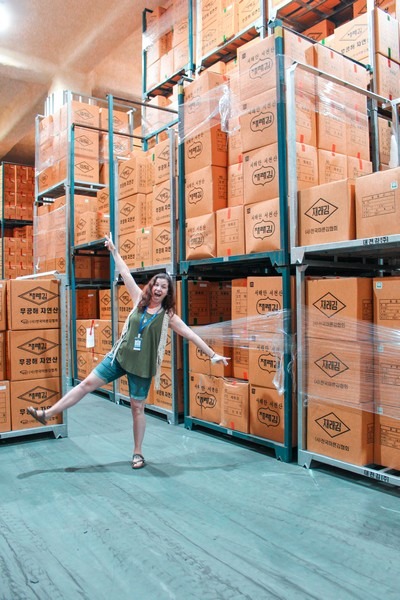
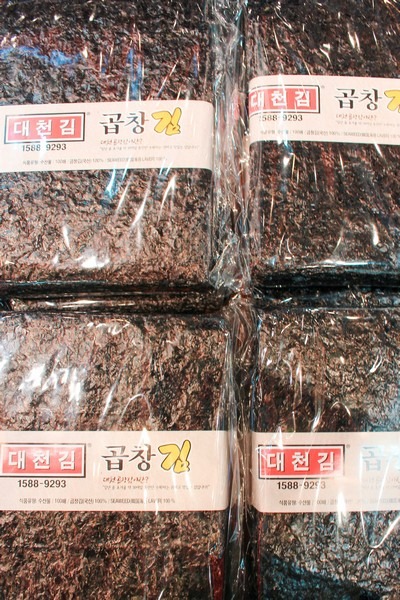
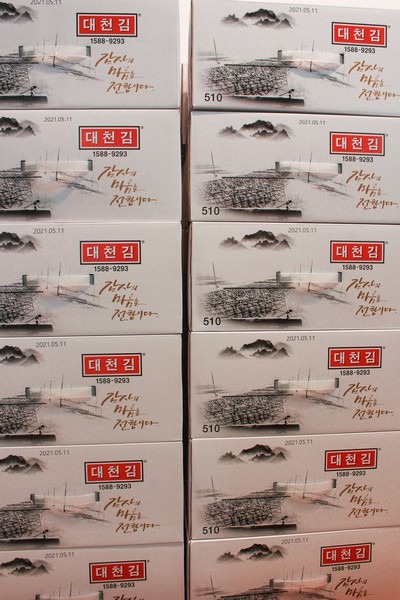
Dae Chun Gim harvests their seaweed directly from the clean waters on the west coast of South Korea and then presses and packages their products in Boryeong in Chungcheongnam-do. Laver that has been grown for 50 days is considered the best for consumption. The whole process starts with harvesting the seaweed in the ocean which can only be done between the months of December and April because after that the waters are too warm and the seaweed isn’t good. Laver harvested from late December to mid-April is considered the peak in taste and nutrition.
Next, the seaweed is purified and ground down and then put through a drying process. Once the laver is dry it goes through a seaweed analysis to ensure it is the high quality seaweed Dae Chun Gim is known for and then it is fed into the sorting machine to then be grilled, seasoned with oil, then salt, grilled once more, counted and packaged. The whole process is really interesting to see and even more interesting when learning about the small details. I never knew laver could only be harvested in the cooler months between December and April. You can stop by their factory to get products at the shop if you’re in the area, and then visit more awesome places in the Seocheon-gun area nearby to continue your fishy adventure.
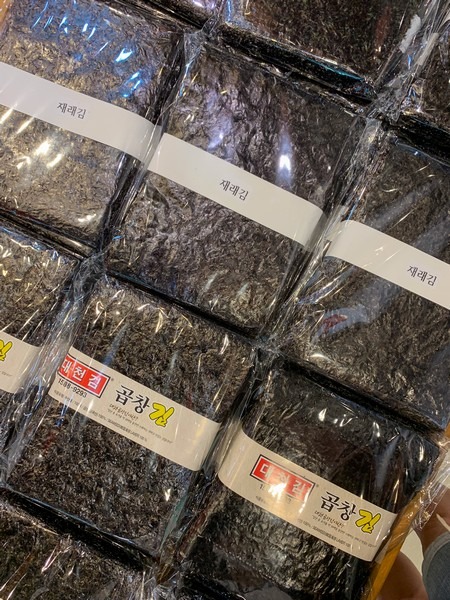

Types Of Laver
There are more than 200 different kinds of laver in Korea, however, they fall under four main types that are more readily available. Once you’ve eaten them all, you’ll be able to easily tell the difference.
- Dol Gim: This laver has a rough texture with holes and is tasty and fragrant.
- Jaerae Gim: Also called Chosun Gim, this laver is probably the one you’ll see most here in Korea. It is roasted with sesame oil and salt.
- Gim for Gimbap: Looking to make your own Korean rolls or seaweed rolls? This is the one you want. This laver is thick, tough, and has smaller holes.
- Parae Gim: This laver is actually mixed with another seaweed called parae, or green algae, and then dried. It’s cheaper than Dol Gim and Jaerae Gim and is often dipped in soy sauce when you eat it in restaurants.
How To Store Laver
Once you’ve gotten your laver home, you’ll want to make sure to store it properly as you don’t really eat it all in one go. Since laver is a side dish, you can imagine that you can keep it for quite a while and just add it to dishes as you need. You don’t want to expose the laver to air for too long. Take out however much you’ll consume at the time and keep the rest in a resealable container that can be kept in a cool, dry place. You don’t want to keep it in sunlight. If you’ll be keeping it for a longer time, place it in the freezer.
Actually because of the way it is consumed, most Korean companies actually sell their laver in small units called “dosirak” sizes. Basically, there are 12 small rectangular pieces of laver per package which is the perfect amount for a 1 to 2 people to share during a meal. You can also find the larger sheets for sale, but if you’ll be using it as a garnish or in smaller quantities for your family, it’s wise to buy the dosirak options or when you open a large sheet package, then cut it and put it in the resealable container for use over the next couple of weeks. You’ll be able to tell when it’s not really good anymore as the taste just goes off and it’s a bit like tasting cardboard rather than the sumptuous laver you started with.

Where To Buy Laver In Korea & Abroad
Laver actually makes a great gift when you’re traveling to meet Korean friends or family here in Korea. While toilet paper is the go-to gift option for housewarming parties in Korea, laver is a great option for holidays when you should take something but don’t know what. Laver is also a great gift to take home from Korea when you’re done traveling as well. It’s unique, it’s edible, which I always think makes a great gift option so people can actually use it for something, consumption.




IN KOREA: You can easily shop for laver in all of the big shopping spots in Korea like EMart and Homeplus, but can also pick it up at local farmer’s markets too and often in fish markets too like Noryangjin Fish Market.
If you ARE going to use it for a holiday gift as you travel, look out for shops that you can pick it up in right at the stations. In Yongsan Train Station, for example, you can go up to the fourth floor to find the K·FISH Promotional Hall which has everything you could use for gifting purposes. The K·FISH Promotional Hall is operated by the Ministry of Oceans and Fisheries so it’s got the best products you could be looking for. Makes it super easy since it’s right at the station. It can even be a last minute purchase if you forgot something.
*Note: Originally the Yongsan Station Duty Free Store, which is where the K·FISH Promotional Hall can be found was open every day from 9:00am to 8:30pm. Currently, because of COVID-19 restrictions, it is NOT open on Saturdays, Sundays, or holidays.
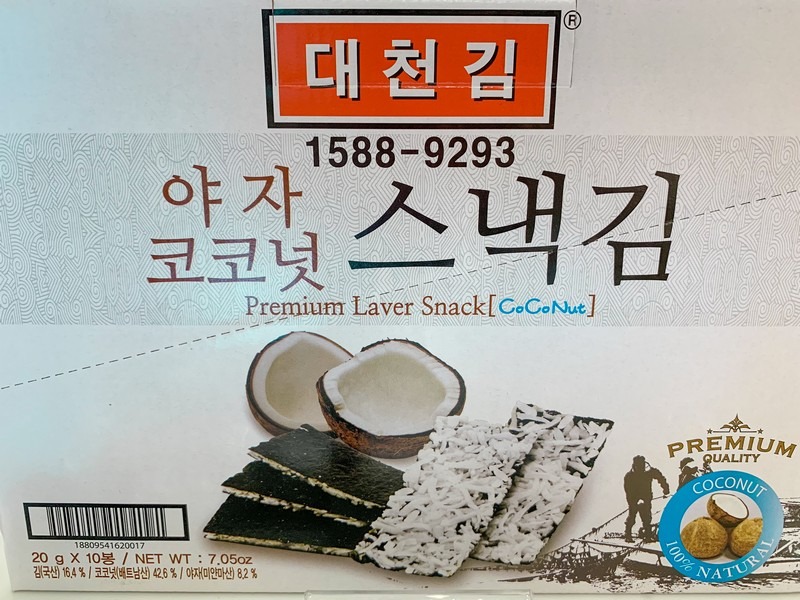
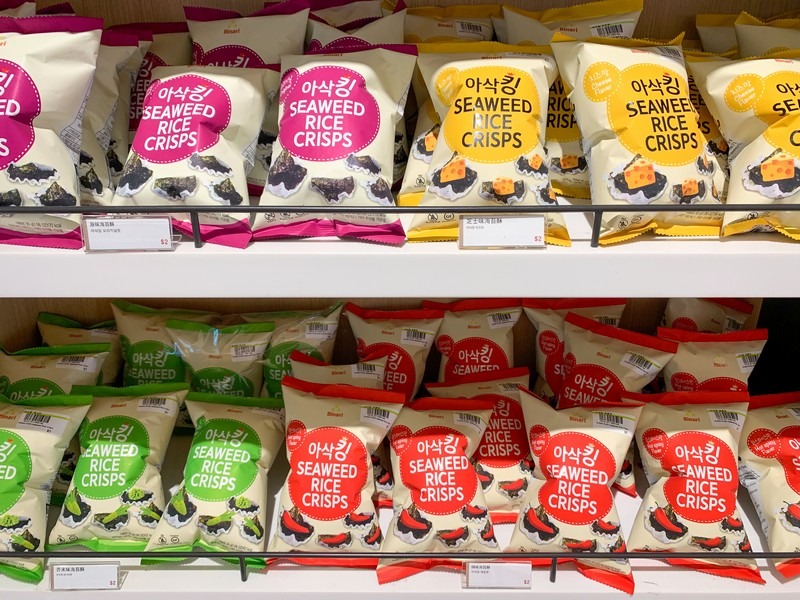
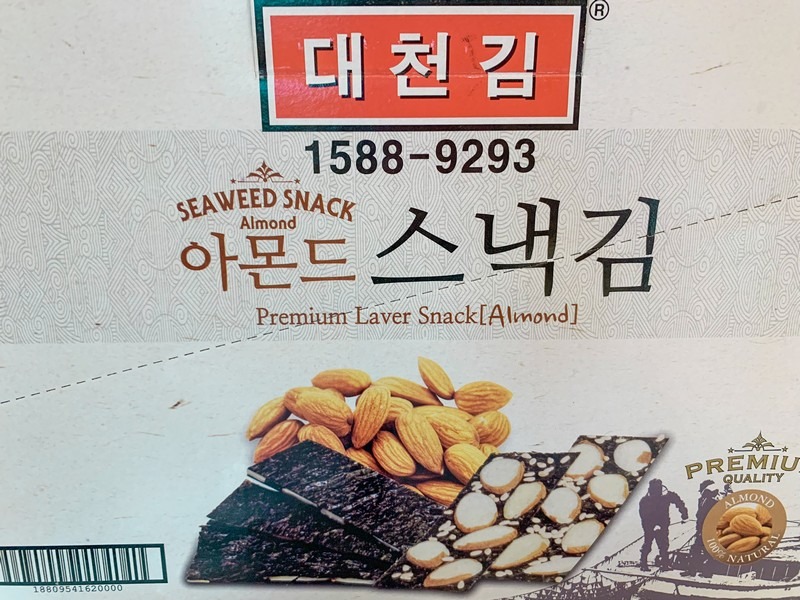
OUTSIDE OF KOREA: If you’re outside of Korea, you can find laver products online easily. Dae Chun Gim, mentioned above, sells on Amazon.com as do other locally sourced laver manufacturers and has no middle man so it’s direct from them to the consumer which means prices don’t go up and you can get the high quality products from Korea to your doorstep wherever you are.
Did you like this post? Pin It!
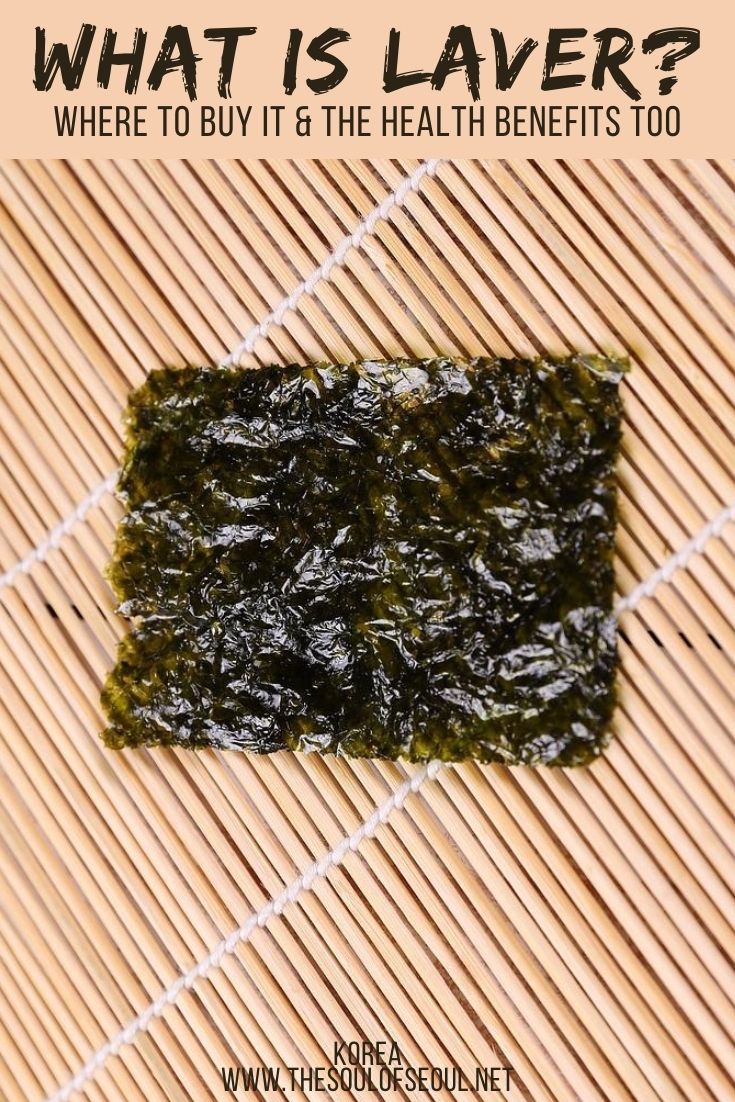


2 Comments
milli
Thank you for this detailed and very thoughtful article. It will help me well! 🙂
Guest
They may look similar at first glance, but they taste different,(texture, taste, thickness) and there are many differences in how they are made. Korean gim is popular with Japanese people.